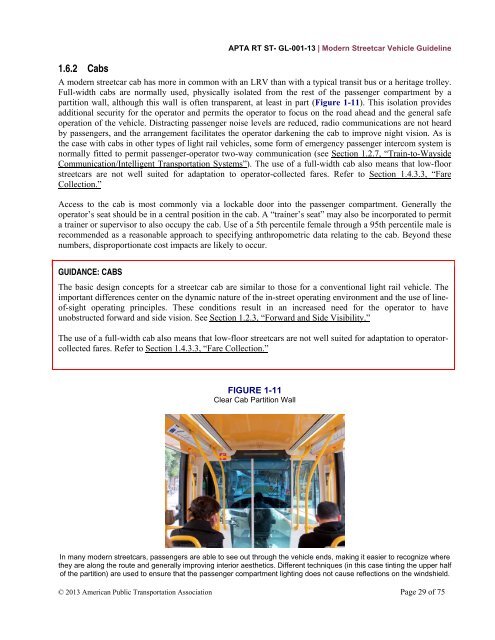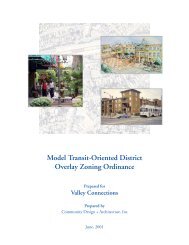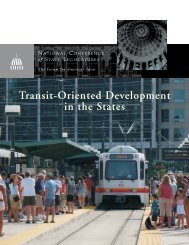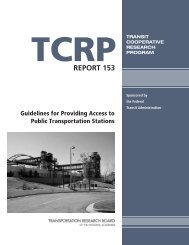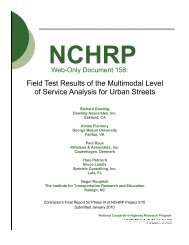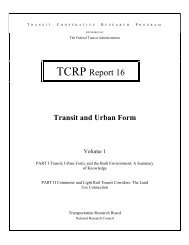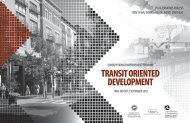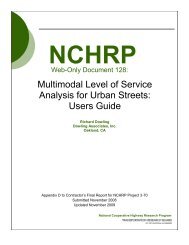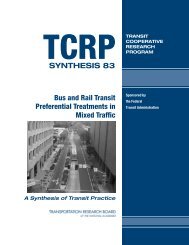Modern Streetcar Vehicle Guideline
Modern Streetcar Vehicle Guideline
Modern Streetcar Vehicle Guideline
Create successful ePaper yourself
Turn your PDF publications into a flip-book with our unique Google optimized e-Paper software.
APTA RT ST- GL-001-13 | <strong>Modern</strong> <strong>Streetcar</strong> <strong>Vehicle</strong> <strong>Guideline</strong>1.6.2 CabsA modern streetcar cab has more in common with an LRV than with a typical transit bus or a heritage trolley.Full-width cabs are normally used, physically isolated from the rest of the passenger compartment by apartition wall, although this wall is often transparent, at least in part (Figure 1-11). This isolation providesadditional security for the operator and permits the operator to focus on the road ahead and the general safeoperation of the vehicle. Distracting passenger noise levels are reduced, radio communications are not heardby passengers, and the arrangement facilitates the operator darkening the cab to improve night vision. As isthe case with cabs in other types of light rail vehicles, some form of emergency passenger intercom system isnormally fitted to permit passenger-operator two-way communication (see Section 1.2.7, “Train-to-WaysideCommunication/Intelligent Transportation Systems”). The use of a full-width cab also means that low-floorstreetcars are not well suited for adaptation to operator-collected fares. Refer to Section 1.4.3.3, “FareCollection.”Access to the cab is most commonly via a lockable door into the passenger compartment. Generally theoperator’s seat should be in a central position in the cab. A “trainer’s seat” may also be incorporated to permita trainer or supervisor to also occupy the cab. Use of a 5th percentile female through a 95th percentile male isrecommended as a reasonable approach to specifying anthropometric data relating to the cab. Beyond thesenumbers, disproportionate cost impacts are likely to occur.GUIDANCE: CABSThe basic design concepts for a streetcar cab are similar to those for a conventional light rail vehicle. Theimportant differences center on the dynamic nature of the in-street operating environment and the use of lineof-sightoperating principles. These conditions result in an increased need for the operator to haveunobstructed forward and side vision. See Section 1.2.3, “Forward and Side Visibility.”The use of a full-width cab also means that low-floor streetcars are not well suited for adaptation to operatorcollectedfares. Refer to Section 1.4.3.3, “Fare Collection.”FIGURE 1-11Clear Cab Partition WallIn many modern streetcars, passengers are able to see out through the vehicle ends, making it easier to recognize wherethey are along the route and generally improving interior aesthetics. Different techniques (in this case tinting the upper halfof the partition) are used to ensure that the passenger compartment lighting does not cause reflections on the windshield.© 2013 American Public Transportation Association Page 29 of 75


